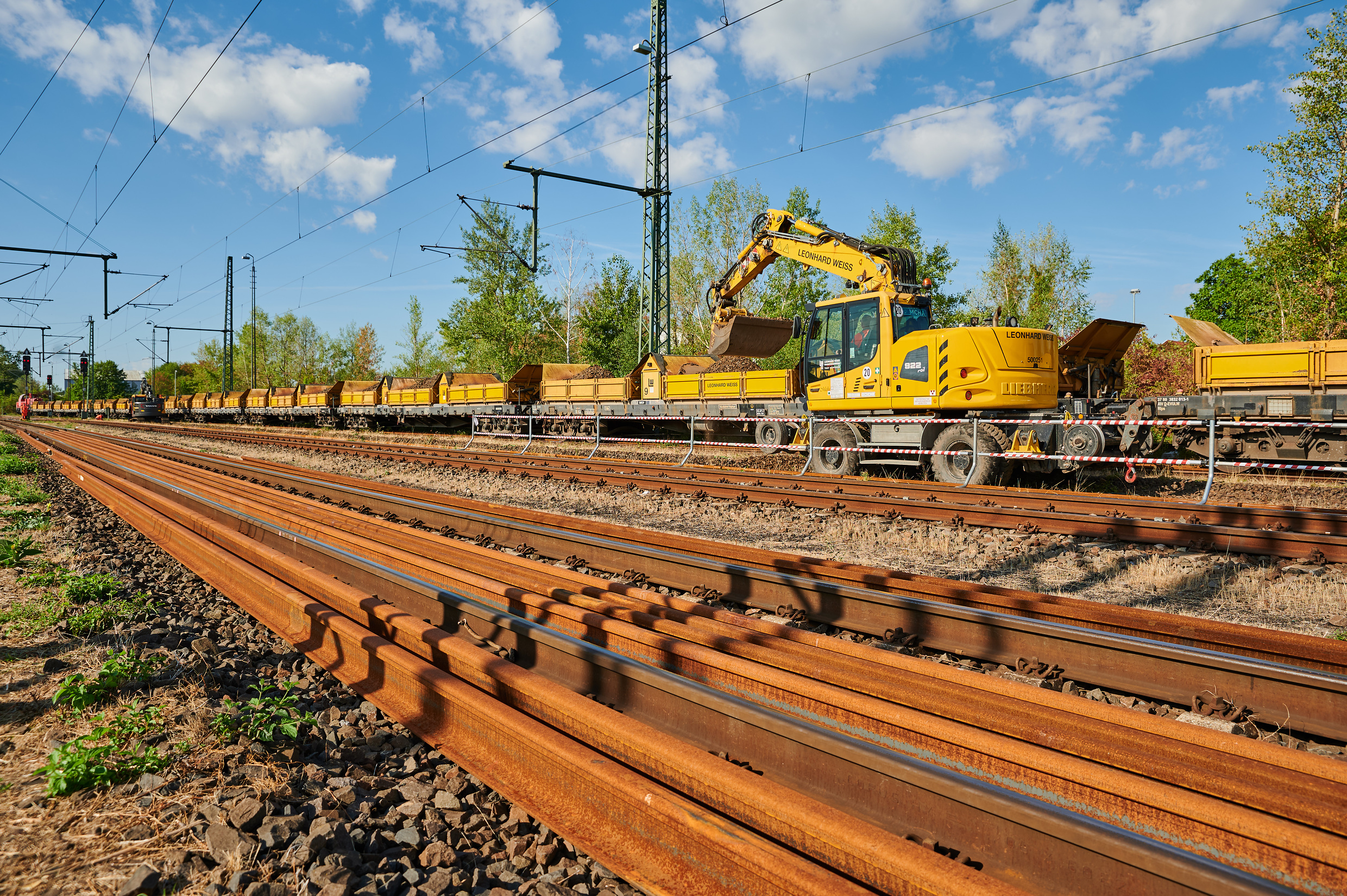
Infrastructure Management
Railway Refined: Building Tomorrow’s Infrastructure Today
Our Infrastructure Management services embody the comprehensive and strategic approach necessary for the modern railway landscape. They promote the safe, timely, and efficient operation of railway systems.
Our philosophy in infrastructure planning centers on the notion that service delivery should dictate infrastructure. Instead of constructing extensive infrastructure and then deliberating its best usage, we advocate for a meticulous service-oriented approach. By forecasting and designing infrastructure that is fundamentally rooted in service planning, we guarantee that every track, signal, and facility is not just state-of-the-art, but also tailored to its intended operational purpose.
Establishing the foundation for railway construction and rehabilitation requires a sound, strategic, and forward-thinking procurement approach. We champion open competition, deep risk analysis, and robust project requirement mapping as keys to optimizing costs and positioning clients for successful infrastructure project deliveries.
By developing and implementing tailored maintenance strategies, we harness the power of state-of-the-art digital approaches and cutting-edge technologies. This proactive approach elevates operating conditions, optimizes maintenance processes, and reduces costs. Our extensive experience in transformational projects and advanced diagnostic tools further solidifies our commitment to a data-driven, condition-based, and predictive maintenance regime. The outcome? A significant reduction in system incidents and a network that is as reliable as it is robust.
Our Services
Infrastructure Planning
Track, Systems, & Infrastructure Procurement
The Challenge
Rail infrastructure procurement in the U.S. goes beyond the complexity of purchasing materials—it is about building a resilient rail system tailored to current demands while also anticipating the challenges of the future. These decisions hold significant financial implications, as they shape rail operations for decades. Cost overruns frequently emerge from late specification changes, often when procurement is viewed solely as an engineering task, neglecting vital operational and service aspects. This narrow viewpoint can also result in higher long-term operations and maintenance costs and miscalculations in infrastructure and asset estimates. A comprehensive, best-practice-based procurement process can be an organization’s safeguard against loss of time, money, and resources.
The high life cycle costs are another pressing concern, often arising when contractual frameworks, such as Design-Build or Design-Build-Maintain, lack clarity, and when interfaces aren’t precisely defined. Furthermore, the incorrect apportionment of contractual packages can lead to failed procurement processes, marked by a lack of bidders and limited options. In an environment with ever-evolving rail technologies, potential disruptions in global supply chains, and a pressing need for environmental sustainability, strategic and forward-thinking procurement strategies have never been more crucial.
Our Service
Railway infrastructure procurement presents numerous challenges, necessitating a rigorous approach that spans strategic, technical, and operational realms. Breaking the procurement process into the phases of design, build, maintain, and operate offers clarity and methodical progression.
Many of our engagements initiate by establishing the strategic procurement approach. We work in tandem with the client to align best practice procurement methods to their unique needs. This typically involves a diagnostic phase where existing strategies undergo a thorough analysis, pinpointing efficiencies and suggesting enhancements.
During concept planning, we set performance and safety goals while defining the scope. This is followed by system definition where operational requirements are laid out, alternative scenarios scrutinized, and reliability, availability, maintainability, and safety are integrated into the blueprint. Ensuring that technical specifications are comprehensive, we craft parameters that address current requirements and anticipate future advancements.
Our approach to lifecycle cost analysis provides an all-encompassing financial view. By diving into the total cost of ownership, we offer insights into both immediate and long-term fiscal implications.
With our expertise in interface management, we foster seamless interaction among the multidisciplinary teams and diverse stakeholders, preempting potential operational hiccups.
In recognizing the pivotal role of an effective supply chain strategy for project success, we prioritize its thorough development with a forward-thinking approach. We proactively navigate potential challenges, refining the supply chain by pinpointing risks tied to political shifts and market dynamics. Our commitment to building strong supplier relationships promotes timely deliveries and optimizes costs.
In bid management, we meticulously craft RFPs that encapsulate the full scope, ensuring they are enticing for a diverse pool of bidders. We emphasize the strategic packaging of tasks and deliverables, promoting a lively competitive landscape.
We understand that a sound contractual framework is fundamental to procurement. With this in view, we craft contracts that offer clarity on roles, responsibilities, and performance metrics, spanning all procurement phases: design, build, maintain, and operate.
Operational integration ensures alignment. We prioritize ensuring that new systems and infrastructure meld seamlessly with pre-existing operations and offer necessary training for fluid operational transitions.
Keeping pace with modern technological trends is vital in the contemporary rail landscape. Through our active monitoring of emerging innovations, we ensure that procurement choices remain at the forefront of industry advancements. Given the growing emphasis on digitalization and automation in rail, our dedication to a digital systems approach seamlessly incorporates these elements into procurement decisions, equipping clients for a future that is not just digital but also adaptive and efficient.
Our Experience
Deutsche Bahn owns, operates, and maintains 21,000 route-miles of track; 5,400 stations; 5,400 trains, and 2,600 train control facilities. Deutsche Bahn has procured technology and services from almost all major suppliers in the world and, as users of these technologies, knows the strengths and weaknesses. DB E.C.O. North America leverages these experiences to ensure a proactive collaboration on a client’s project. We have helped clients across the globe implementing civil works, track and systems, and other infrastructure elements on both new and existing rail lines.
Infrastructure Maintenance Excellence
The Challenge
Railroad infrastructure forms the backbone of the railroad system, and in the diverse landscape of North America, this infrastructure spans a mix of legacy systems and modern components. Maintenance of this varied infrastructure is essential for the safe and efficient operation of a rail system. It ensures that tracks, signals, bridges, and other components are consistently in good operating condition, reducing the risk of accidents and minimizing downtime.
Given that our rail network spans different terrains, from bustling urban centers to sprawling rural areas, upholding uniform maintenance standards presents its challenges. This becomes even more critical since infrastructure maintenance often occurs within tight time windows between operations. This demands that schedules be meticulously coordinated and managed, ensuring work packages are precisely tailored for the available track time.
Financial and bureaucratic constraints further complicate the scenario. Public agencies grapple with the difficult task of balancing immediate repairs and long-term upgrade projects, especially amidst budgetary constraints. The intricacies of navigating varied regulatory landscapes between U.S. states or Canadian provinces add another layer to the challenge, requiring deep knowledge and strategic compliance.
The implications of not maintaining rail infrastructure aptly are severe. Beyond the immediate risks like costly repairs and potential derailments, there is the longer-term risk of eroding the viability and efficiency of the rail system. Achieving excellence in infrastructure maintenance, thus, is not just about upkeep. It is about maximizing the availability and quality of the assets while judiciously minimizing costs, all while navigating the unique challenges presented by the North American rail landscape.
Our Service
Development & Implementation of Maintenance & Digitalization Strategies
As seen in other industries, railway infrastructure technologies are undergoing transformative changes. Leveraging our experience with the latest tools like improved asset management systems and AI-driven diagnostic systems, we assist North American clients in crafting and enacting a customized maintenance strategy. Our aim is to select the best tools, technologies, and systems to elevate maintenance programs, curtail costs, and enhance overall performance.
Operational Excellence
A pivotal challenge lies in orchestrating infrastructure maintenance that is both cost-effective and efficient — realizing projects “on time, on budget.” At the same time, the quality of results should be excellent, offering ample capacity to railway operators. Our collaboration with clients dives deep into the maintenance process, spotting potential enhancements. We then strategize and execute measures to uplift these processes, anchoring our efforts in achieving operational excellence.
Training & Capacity Building
The technological evolution in rail maintenance necessitates a workforce that is adept and updated. We accentuate the importance of training, guiding teams to be proficient in leveraging new-age tools and systems.
Emergency Response Planning
In a world of uncertainties, being prepared is paramount. We craft strategies that emphasize anticipation of unexpected maintenance challenges, whether from natural events or other unforeseen incidents, to keep rail operations running smoothly.
Our Experience
Deutsche Bahn stands as one of the world’s leading railway organizations. Our extensive rail network, one of the largest globally, poses many challenges, as it still contains a mosaic of legacy infrastructure, some portions with histories reaching back more than a hundred years, alongside state-of-the-art, digitally-enabled systems. Managing this blend of very old and diverse infrastructure together with advanced digital systems has been a distinctive challenge, and DB has cultivated unique expertise in this arena.
In Germany, infrastructure maintenance excellence is a critical prerequisite to operate a punctual and reliable rail system. Over recent years, as our network approached its operational capacity limits, the challenges of ensuring consistent, high-quality maintenance have been magnified. However, these challenges have also been opportunities – driving DB to innovate, adapt, and deepen our expertise. Our consistent commitment to harnessing technology, upskilling our workforce, and delivering top-notch service is evident daily as millions of passengers rely on our system.
We have spearheaded and supported large-scale transformational projects in Germany. One such initiative, for example, has been the digitalization and standardization of our entire maintenance organization, directly impacting more than 10,000 frontline workers. This effort involved introducing revamped processes, complemented by a comprehensive KPI-driven quality and performance management system. Central to this project was equipping all personnel with mobile devices, streamlining the management of work orders.
Furthermore, in recent years, Deutsche Bahn has adopted the diagnostic and analysis platform “DIANA”. Integrated with over 40,000 assets, such as switches, DIANA has emerged as an invaluable tool for approximately 3,500 of our professionals. Harnessing real-time data analysis, it enables a transition from reactive to condition-based and predictive maintenance, propelling us towards a target of 50% fewer diagnosable incidents and reinforcing our commitment to both legacy and modern infrastructure maintenance. For more detailed insights, you can find further information here.




